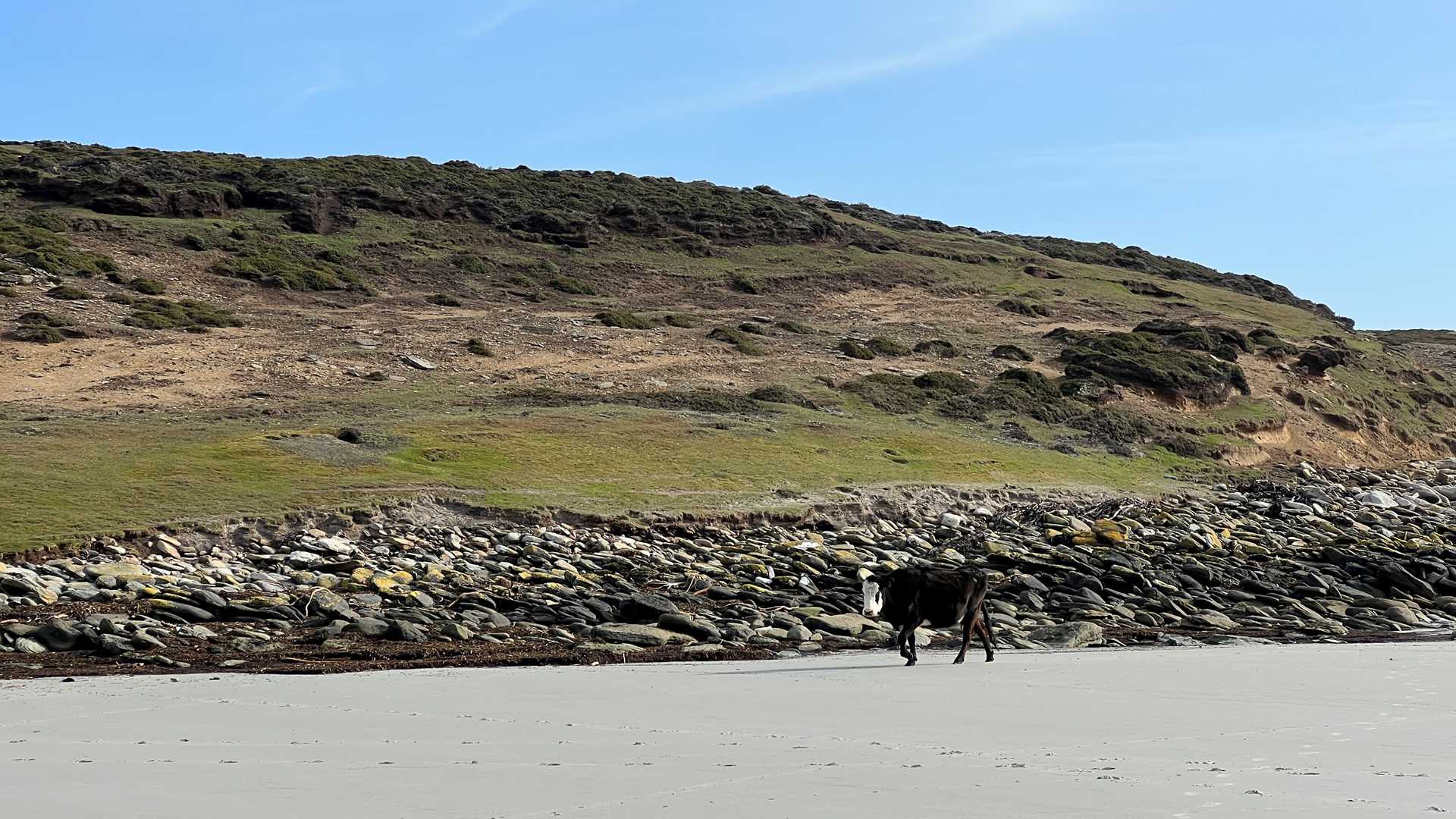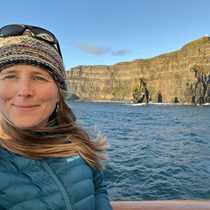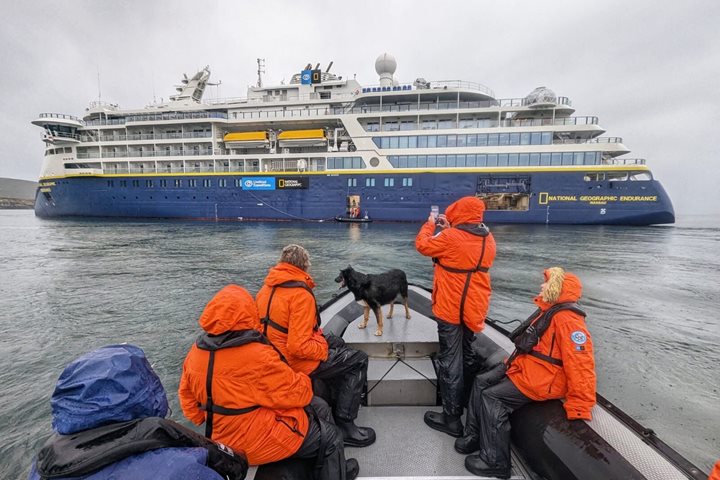Land Ho! Many of us were grateful to spy land outside of our portholes this morning. The sun was coming up over Saunders Island in the northwest colony of the Falkland Islands. Guests enjoyed the first Zodiac operation of this voyage, which brough them to a long, white beach spotted with sizeable bovines. Just beyond the beach, the grass was home to a comical mixture of sheep and Magellanic penguins. Many guests opted to stretch their legs on the mile-long hike to an impressive black-browed albatross colony that spans the clifftops on the northern part of the island. We maintained a respectful and bio secure distance and enjoyed observing these beautiful animals at rest on their nests built up out of the muddy sediment. Several mature individuals lifted themselves briefly to reveal their incubating treasure, whilst the adolescents were busy practicing courtship, fighting over vacant nests, and seemingly keeping their feet warm as there were no eggs seen in their nests.
A mile along the clifftops brought us to the cacophony and humorous site of a southern rockhopper penguin colony. Easily recognized by their yellow eyelashes and eyelids, several groups demonstrated how they got their name as they made their way down the gully, going to and from the ocean to feed. It was almost like they were hopping in unison while running the gauntlet down to the beach. There was some confusion when a few birds flew in and landed nearby: “I thought penguins couldn’t fly?” Indeed, those were imperial shags that were either nesting or just hanging out amongst the penguins. Since both birds have a black back and a white underside, they can be easily confused. However, flight is a sure giveaway that a bird is absolutely not a penguin.
The bridge crew seamlessly repositioned us to the east side of neighboring Keppel Island during lunch. This was a slightly more exposed Zodiac trip, and we got a gentle reminder of why waterproof gear is recommended on all outings. This island was the site of a missionary settlement during the 1800s. The missionaries were determined to understand and “improve” the Fuegian Yaghan in a setting that was more welcoming, climatically, than their native land. The settlement lasted until 1911 when it was sold to operate as a farm. It has recently been reoccupied by a local family hoping to make the island work as both a sheep farm and tourist spot. Another mile-long hike along the grassy tussock landed us at a beach sheltered from the wind and facing the repositioned ship. The host family prepared some local meats to grill on the barbecue for teatime. It was a nice way to taste the local flavors among the local community whilst the sun lowered towards the horizon on our second day of exploration.







